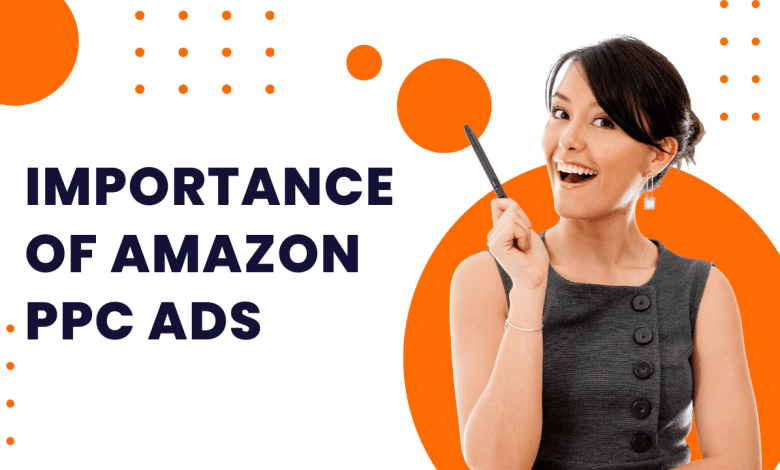The Importance of Amazon PPC Ads

Amazon PPC Ads are important for Amazon sellers to promote their products and increase sales. They use a pay-per-click system, which means that the seller only pays when a customer clicks on their ad.
To optimize their ads, sellers need to know how well their campaigns are performing. This is why it’s important to track and analyze Amazon PPC metrics on a regular basis.
1. Are Amazon PPC ads important?
Amazon PPC is an auction-based ad model that enables sellers to bid for ad spots using keywords. This gives advertisers the ability to increase their SERP rankings and beat the competition. In order to succeed with this strategy, businesses need to understand how PPC works and its impact on ROI.
PPC on Amazon is not cheap and can quickly drain your budget if not managed effectively. In addition to the cost of ads, there are other associated costs such as FBA fees, shipping, and capital per unit expenses. It is important to factor these additional costs into your advertising budget when calculating your return on ad spend (ACoS).
To keep your Amazon PPC effective, it is critical to optimize your campaigns regularly. This includes adjusting bid amounts and determining profitability at the product level. You should also add converting search terms and negative keywords to your campaigns as needed.
The first step in optimizing your Amazon PPC is identifying the keywords that are most likely to drive sales. This can be done by logging into your Seller Central account and selecting the Advertising tab. From here, you can select the Create Campaign option and choose a Manual or Automatic campaign. Automatic campaigns are great for beginners because they are easy to set up in Seller Central and will automatically bid on words you wouldn’t have guessed customers searched for. Manual campaigns are more customizable and allow you to target specific keywords or search terms. You can also set up Keyword Match Types, which determine the degree of relevance between your keywords and customer search terms. There are three match types to choose from: Broad, Phrase, and Exact.
2. Why Your Business Should Use Amazon PPC
Amazon PPC ads are a great way to get your products seen by customers. By using keywords that are relevant to your product, you can ensure that your ad is shown when a customer searches for those words. In addition, you only pay for clicks that result in a sale, making it a very cost-effective advertising option.
With the growing number of consumers shopping online, it is important for businesses to make themselves visible on Amazon. With so many sellers and products on the platform, it can be difficult to stand out from the crowd. Amazon PPC allows you to target potential customers directly, boosting your visibility and sales.
When deciding how much to spend on Amazon PPC, it is important to consider your business goals and profit margins. A good place to start is by calculating your break-even ACoS, which will tell you the most you can spend on ads while still generating enough returns to cover your costs.
In order to maximize ROI, it is also important to set a daily budget and monitor ad spending closely. By regularly reviewing and adjusting campaigns, you can make sure that your ads are only showing up when they’re likely to be clicked on. You can also reduce wasted ad spending by using negative keywords, which prevent your ads from showing up for irrelevant search terms.
3. How do I keep my Amazon PPC effective?
Keeping your Amazon PPC effective is a crucial part of running a successful online business. There are several ways to do this, but one of the most important is to set a daily budget for your campaign. This will ensure that you don’t spend more than you can afford to. You can set your daily budget in the Ad Campaign Settings section.
Another way to keep your Amazon PPC effective is to make sure that you are using the right keywords. This can be done by looking at the performance of your ads and determining which keywords are converting. You can also use a keyword research tool to find new keywords to target.
Once you’ve determined the right keywords, you can set your bids for them. The higher your bid, the more likely your ad will be shown. This will help you to drive traffic and sales while minimizing your Amazon advertising costs.
One of the key things to remember is that Amazon ads are auction-based. This means that when a shopper searches for a keyword, Amazon will compile all of the relevant ads and display them to the shopper. The ad with the highest bid will win the auction, but the winning advertiser only pays $0.01 more than the second-highest bid. This can be a great way to improve the visibility of your FBA and FBM products and amplify sales.
4. What Are the Amazon Advertising PPC Types?
PPC ads are a great way to increase visibility and drive sales on Amazon. They’re also a cost-effective advertising option, as you only pay when a shopper clicks on your ad. In addition, Amazon PPC campaigns provide valuable data and insights that can help you optimize your ad campaign for better performance and ROI.
There are several different types of Amazon advertising PPC, including Sponsored Product ads, Sponsored Brand ads, and Sponsored Display ads (formerly known as Product Listing Ads). Each type offers unique benefits and targeting options.
Sponsored Product ads appear in search results and on product detail pages, and can closely resemble organic listings. They are the most popular ad type for third-party sellers and are used by 66% of all Amazon advertisers.
These ads can be targeted based on keywords, product ASINs, or categories on Amazon. They can also be targeted to remarketing audiences on external websites, who have previously visited your product listings on Amazon.
Sponsored Product ads can be highly effective in generating sales for new and seasonal products, as well as promoting your business as a top seller of a specific product. To make informed decisions about your ad strategy and optimize your campaign performance, it’s essential to understand how these ads work and track relevant metrics. This becomes even more crucial when you’re working with a limited budget.
Here are some key considerations:
-
Ad Placement and Visibility:
Sponsored Product ads appear in search results and on product detail pages. Understanding the placement and visibility of your ads is important for maximizing their impact. Monitoring the impressions and clicks your ads receive can help you evaluate their visibility and identify opportunities to increase exposure.
-
Keyword Optimization:
Keywords play a vital role in Sponsored Product ads. Selecting relevant and high-performing keywords is crucial to ensure your ads are displayed to the right audience. Continuously monitoring keyword performance, such as click-through rates (CTR) and conversions, allows you to optimize your keyword selection and bidding strategy.
-
Conversion Rate:
Tracking the conversion rate of your Sponsored Product ads helps you assess how well they are driving actual sales. By analyzing the conversion rate, you can identify factors that may be influencing the performance of your ads, such as product pricing, product images, or ad copy. This insight can guide you in making improvements to increase conversions.
-
Advertising Cost of Sales (ACoS):
ACoS is a key metric in Amazon PPC advertising that measures the ratio of your ad spend to the attributed sales generated from your ads. Monitoring ACoS is crucial, especially when working with a limited budget, as it helps you evaluate the efficiency and profitability of your campaigns. Adjusting your bidding strategy, targeting, or ad spending based on ACoS can help optimize your budget allocation.
-
Return on Investment (ROI):
Calculating the ROI of your Sponsored Product ads allows you to assess the profitability of your advertising efforts. Consider factors such as your profit margins, advertising costs, and sales generated to determine the overall effectiveness of your campaigns. Tracking ROI helps you make data-driven decisions on budget allocation and campaign optimization.
By understanding how Sponsored Product ads work and tracking relevant metrics, you can make informed decisions about your ad strategy, optimize your campaigns for better performance, and make the most of your limited budget. Continuously monitoring and analyzing these metrics allows you to refine your approach, drive sales, and achieve your advertising goals effectively.






